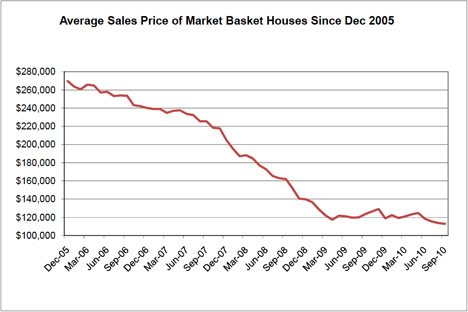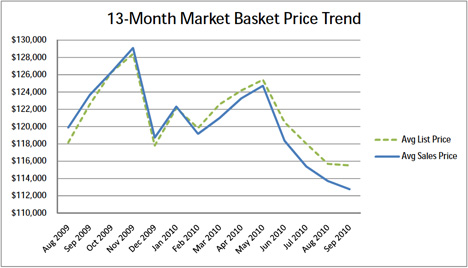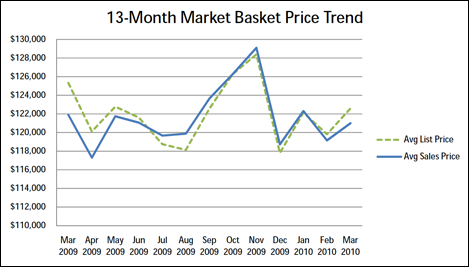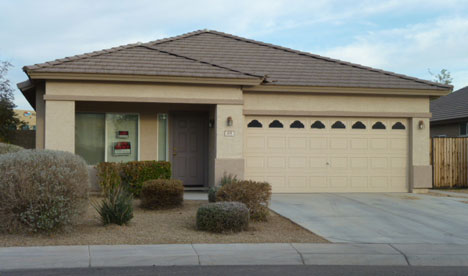
That’s a nice looking home, isn’t it? It’s in Coldwater Springs in Avondale, Arizona, one of my favorite subdivisions in one of my favorite suburbs of Phoenix. I have sold many homes in Coldwater Springs, both to owner-occupants and to rental home investors, always with happy results.
So what’s wrong with this wannabe rental home? A lot, as it turns out.
For one thing, the home is facing straight west. The entire front of the house is going to get blasted by the brutal desert sun all summer long. That means much higher air conditioning bills. Tenants can glower at their bills just as well as homeowners. The result is that west-facing homes in Coldwater Springs sit vacant an average of 21 days longer than comparable north- or south-facing homes. That’s three extra weeks on market — if you’re lucky — every time the house goes vacant. Money talks: Call it a $750 loss in real cash money every time the home has to find a new tenant.
That’s a bad mistake on the investor’s part, but here’s a worse one:
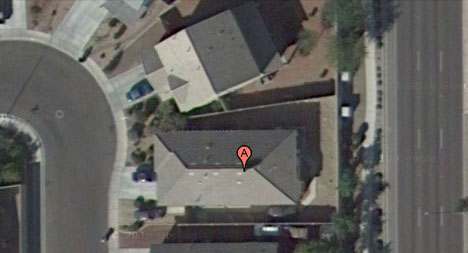
Yes, that’s a major thoroughfare right behind the home. The house will always suffer from traffic noise — but never quite so much as when potential tenants are rejecting the home and moving on to the next candidate on their shopping list.
It gets worse. The house is oriented toward the corner in such a way that anyone heading south at night will flash their headlights right in the living room window. Dozens of times a night, every night. Tenants may learn to ignore the traffic noise, but they’re never going to learn to love having headlights in their home all the time.
There’s more. Check this out:
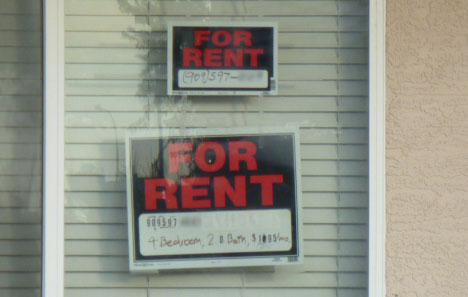
At $1,095 a month, this rental home is overpriced, but not by a huge amount. Facing north, without the headlights and traffic noise, it would be worth around $1,050 a month. Discounting for the truly awful location, it’s going to rent for less — maybe $975 if the landlord gets very lucky.
So what’s the benefit of pricing this house at least $120 a month over the rent it can reasonably be expected to earn? No pesky phone calls — to the landlord’s phone in Riverside County, California. The “marketing strategy” of posting two hardware-store signs in the window is just the icing on the cake.
Just think! Tenants can over-pay on the rent in order to have a home in a poor location. They can suffer traffic noise and headlights in the living room all night. They can pay at least $1,000 more a year in air conditioning costs. And they can deal with a remote-control landlord who, to all appearances, is committed to demonstrating in his every decision that he can’t get anything right. Why would they ever even consider renting another home instead?
In real life, the only tenants who will apply to lease this home will be the folks who have been turned down by every other landlord they have approached. All of the premium tenants — good jobs, good credit, good rental history — will be living in premium homes, while the tenants who land in this home could easily be slow-pay — or no-pay — candidates for forcible eviction. And remember, this home will cost an extra $750 in vacant days, on average, every time it goes vacant.
All of the identifying details about this property have been obscured to avoid humiliating the guilty party. But this exercise is a slam-dunk demonstration of the reasons why rental home investors need representation — expert representation.
I’m a salesman, that’s a fact. I make my money selling houses. But I don’t ever sell the wrong house, and I don’t ever let my investors make even minor errors, much less boneheaded mistakes like these. I have lots of ideas about how to make money investing in rental homes in the suburbs of Phoenix. If you would like to explore every idea I have for getting things right — buying the right house in the right location and then marketing that home to premium tenants, all at very substantial annual cash-on-cash returns — drop me an email or give me a call at 602-740-7531.

